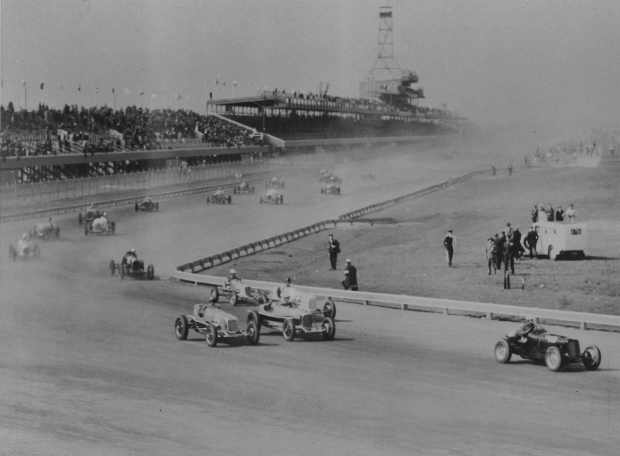The Revival of the Vanderbilt Cup Races in 1936 and 1937

American Auto racing in the 1930’s had dwindled in the face of the Great Depression. Road racing was dead. Gone, too, were the wood plank bowl speedways of the roaring twenties, leaving the Indianapolis 500 as the one occasion each year to spotlight the sport.
The spirit of American road racing survived, however, in the hearts of men like George Robertson, the burly, determined competitor that had unabashedly staked a claim for America as an international force with his stirring triumph in the 1908 Vanderbilt Cup Race. Robertson had gone on to a successful career in the military but never strayed too far from his passion for motor sport. He managed America’s only French Grand Prix winning team, Duesenberg, in 1921.
In 1931 Robertson began shopping a proposal for his vision of a flat road course designed in a manner he believed would be a level playing field for the sophisticated road racing equipment of Europe and the “specials” of American oval track racing. Not until 1933, when he began working with the AAA’s Arthur Pillsbury and Eddie Rickenbacker, who by this time was the president of the Indianapolis Motor Speedway and the chairman of the AAA contest board, did he begin to make serious progress.
Rickenbacker attracted George Marshall, owner of the Boston Braves football team, to lead a marketing effort. The influence of Marshall and Rickenbacker attracted the level of investment required to pull off a first class road race.
Robertson located property adjoining Roosevelt Field Airport in Westbury and East Garden City, Long Island to build the course and stage what he hoped would be a revival of the Vanderbilt Cup Races. The area on which the course was developed bordered the Long Island Motor Parkway. Constructed for roughly $1,000,000, the course was 4 miles long with 16 turns so tight it soon earned the name, “Hell’s Hairpin,” from some of the drivers.The above 1936 image shows the new raceway located at Old Country Road and Merrick Avenue, the current location of the Source Shopping Mall.
Time magazine described the new course in its September 28, 1936 issue.
Newsreels of the 1936 and 1937 Vanderbilt Races can be found in the video section of the Blog.
Several different types of Vanderbilia can be found from the two Vanderbilt Cup Races held at Roosevelt Raceway. Gene Ingram of New Castle, Indiana has emailed me two memorabilia from the 1937 race including a ticket and a driver's pass.
If you wish to have your piece of Vanderbilia appraised or featured on VanderbiltCupRaces.com, send a jpeg of the item to [email protected] .



Comments